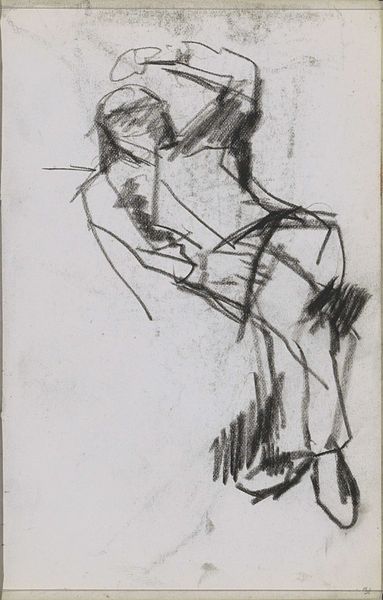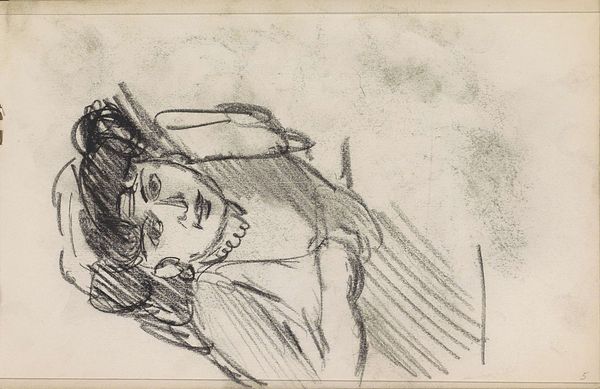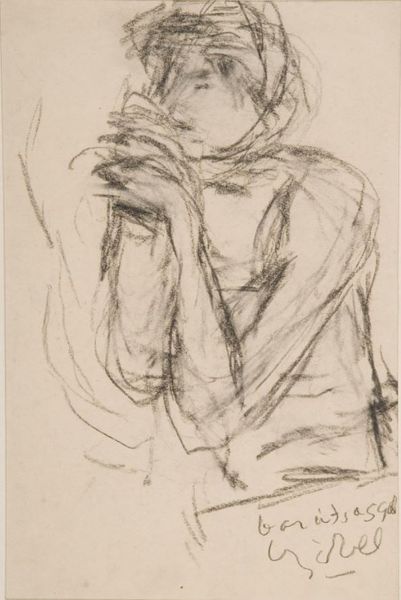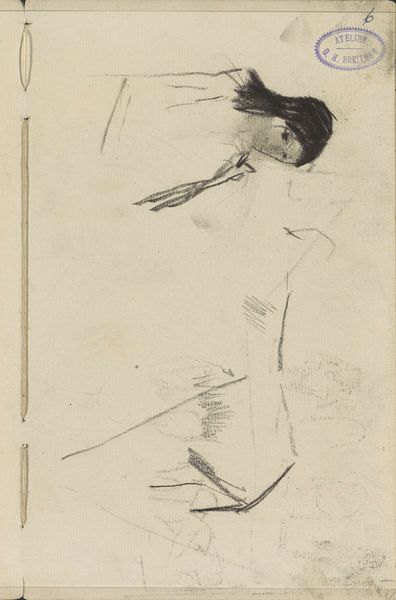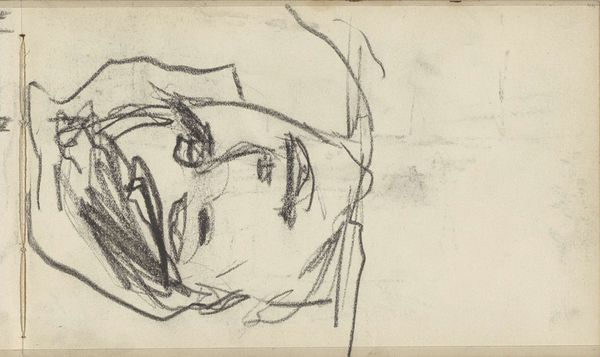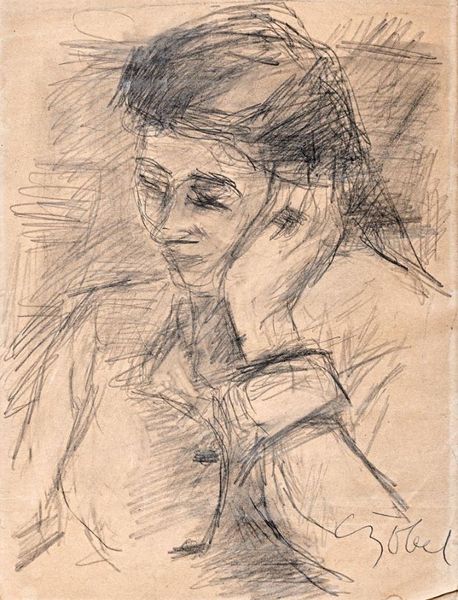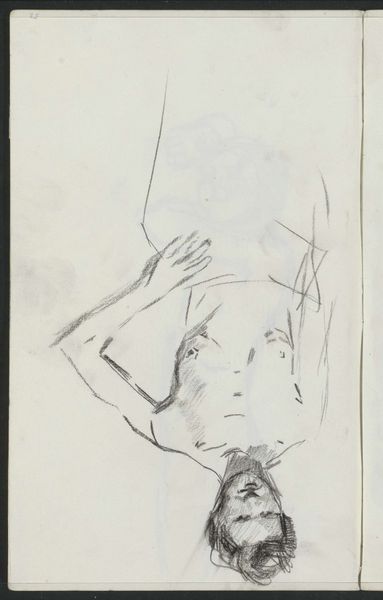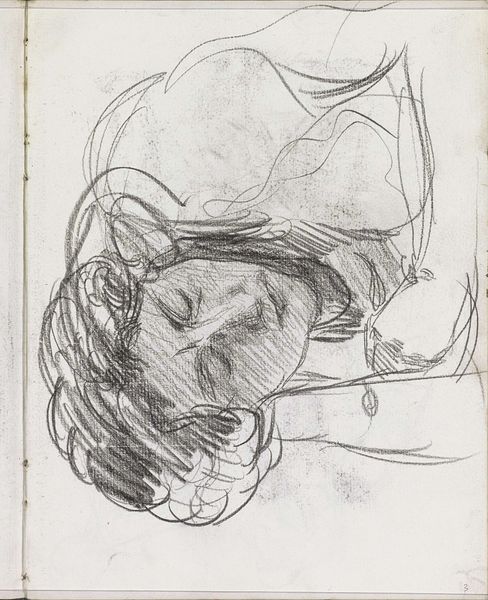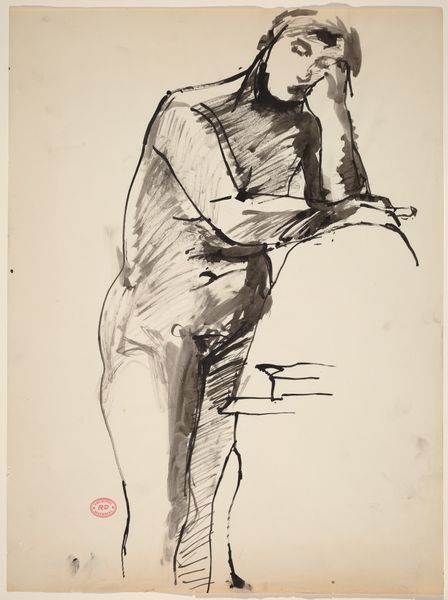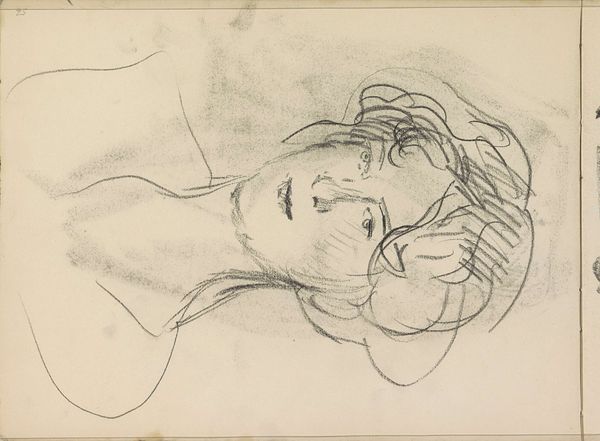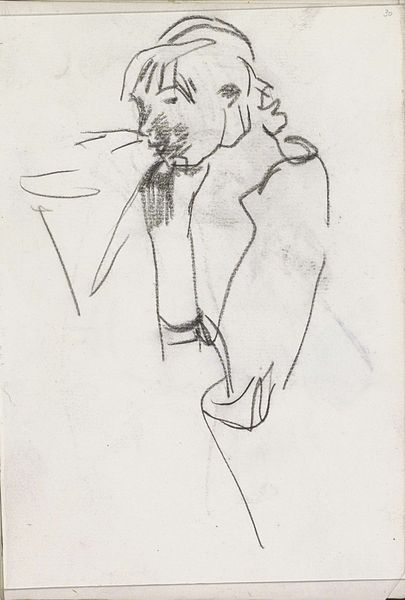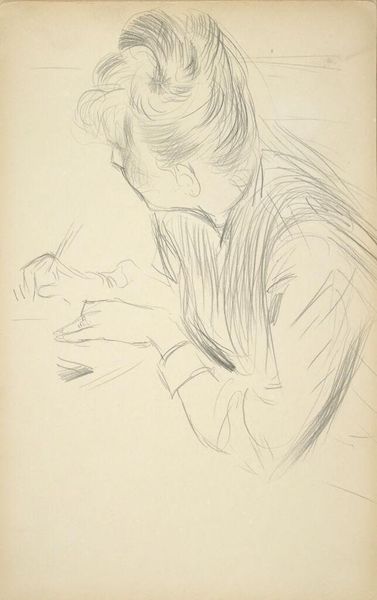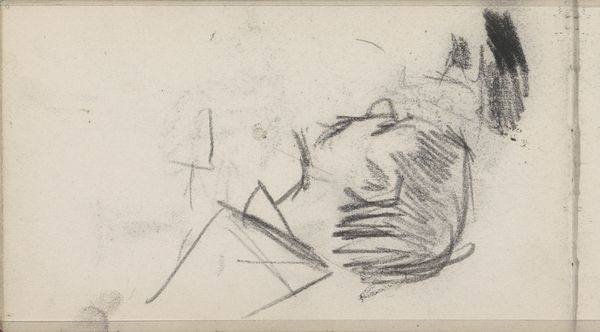
drawing, watercolor, ink
#
portrait
#
drawing
#
charcoal drawing
#
figuration
#
watercolor
#
ink
#
intimism
#
watercolour illustration
#
watercolor
Copyright: Rijks Museum: Open Domain
Editor: Here we have Isaac Israels' "Seated Woman with a Hand Under Her Chin," a drawing from sometime between 1875 and 1934, held in the Rijksmuseum. It’s rendered in watercolor, charcoal, and ink… The first thing I notice is the intimacy, that feeling of quiet contemplation. What do you see in this piece? Curator: It’s interesting you mention intimacy. Considering Israels’ focus on portraying modern life, particularly the lives of women, I think we have to ask: For whom was this intimacy intended? Was it part of a broader project to make visible the interior lives of women who might otherwise be overlooked in the public sphere? Or something else? Editor: So you're saying that this simple sketch might actually be making a statement? Curator: Possibly. Think about the artistic circles of the time, and how the depiction of women, particularly their psychological states, was becoming increasingly central. Israels, positioning himself within this context, consciously or unconsciously engages with those trends. The rapid strokes of watercolor and ink even speak to the accelerated pace of modern life. How do those techniques change how the subject might have been perceived versus, say, an oil painting? Editor: Well, it certainly feels more immediate, more personal… less formal and posed. That probably affects how we empathize with her. We see it as capturing a candid moment. Curator: Exactly! This ties into a broader democratization of art. Intimate portrayals gain significance when more viewers have access to them. Editor: I hadn't thought about it in terms of the art world at large. This really shifts my perception of what seemed like just a quiet portrait. Curator: Indeed. Hopefully, by analyzing the conditions of an artwork, its intended public role, the historical era, and socio-political influences, it's never just that. Editor: That gives me so much to think about moving forward!
Comments
No comments
Be the first to comment and join the conversation on the ultimate creative platform.
